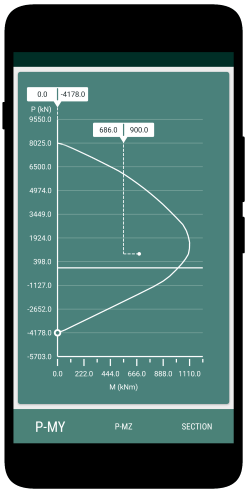The column is a vertical structure that helps transfer the load from top to bottom in a framed structure. Specifically, columns transfer the compressive load from top floors, ceiling, or beam to the foundation or the beams. As we have already discussed in the previous port reinforced concrete beam is a composite section made of concrete and reinforcement. In this post, you will get the answer to why we should account for minimum and maximum reinforcement. Concrete is good in compression and is bad in tension.
You must ask this question that if the concrete is good in compression and the column is compression, why is there a requirement of reinforcement. We use steel as reinforcement in most of the structures. Steel is good in tension. So when we combine concrete and reinforcement, the structure becomes good in tension and compression.
Minimum reinforcement
We should provide minimum reinforcement to provide resistance against the bending moment in the column section. Similar to beams min. Reinforcement is provided to control the cracking of the section. Which usually occurs due to shrinkage and creep or temperature change. The reinforcement helps in reducing the individual crack width.
According to IS: 456 2000, longitudinal reinforcement shall not be less than 0.8 % of the gross cross-section of the column.
Maximum reinforcement
The maximum reinforcement is the maximum percentage of reinforcement permissible for a particular section. It is not at all advisable to provide reinforcement more than the maximum percentage of reinforcement. We all are aware that reinforcement (steel) is a costlier material compared to concrete, so it is better to use it efficiently as more reinforcement will not help the structure be safe as the concrete will fail under crushing.
According to IS: 456 2000, longitudinal reinforcement shall not be more than 6 % of the column’s gross cross section.
Column design
- RCC Column Design is a free app for designing reinforced concrete columns as per Indian Standards.
- RCC Design and detailing could be performed for uniaxial and biaxial bending conditions specified in IS456:2000
- Option to save the design projects in local storage.
- Detailed calculation steps presented for verification and validation.
